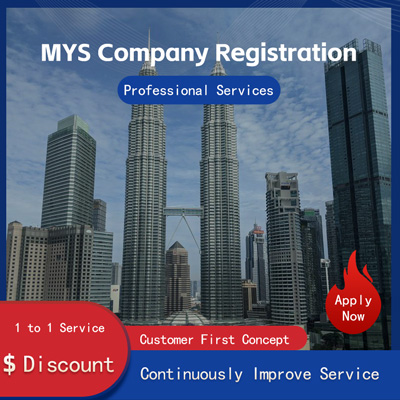
Comprehensive Analysis of US Companies Registering Trademarks in China How Much Do You Know?
A Comprehensive Guide to Trademark Registration in China for U.S. Companies How Much Do You Know?
In today’s era of global economic integration, China, with its vast consumer market and continuously growing purchasing power, has become a key destination for international businesses. As the world’s second-largest economy, China is not only a global manufacturing hub but also a crucial market that brands around the world are eager to enter. For U.S. companies aiming to establish a foothold in China, trademark registration is one of the essential legal steps they must take seriously. This article provides an in-depth analysis of the relevant procedures, key considerations, and recent developments related to trademark registration in China for U.S. companies.

1. Why Trademark Registration Is Crucial in the Chinese Market
Trademarks serve as the core identifier of a brand and are critical for consumers in recognizing the source of a product or service. In China, trademark rights are granted on a first-to-file basis, meaning that whoever files first owns the exclusive rights to the trademark. For U.S. companies, failing to register their trademarks in China in a timely manner could lead to the risk of third-party squatting.
In recent years, many international brands have faced legal challenges due to delayed trademark registration, and some have even had to repurchase their own brand names at high costs. For example, in 2025, a well-known U.S. sportswear brand encountered a third party that had registered its core trademark in China. Although the company eventually won the legal battle, the lengthy and costly process significantly disrupted its market expansion plans. These incidents highlight that trademark registration is not just a legal necessity, but also an integral part of corporate strategic planning.
2. The Basic Trademark Registration Process for U.S. Companies in China
1. Trademark Search
Before submitting an application, it is recommended that companies conduct a trademark search to confirm whether the proposed trademark has already been registered or applied for by others. The China National Intellectual Property Administration CNIPA provides a publicly accessible trademark database for preliminary checks via its official website.
2. Submitting Application Documents
U.S. companies must appoint a local Chinese trademark agency to handle the application. Required documents typically include copies of the company’s business license, trademark design samples, and a list of designated goods or services categories. Categories should be selected according to the Nice Classification system.
3. Examination Process
The China Trademark Office conducts both formal and substantive examinations. The formal examination ensures that all required documents are submitted, while the substantive examination evaluates the distinctiveness of the trademark and whether it is similar to existing ones. The examination period usually lasts between 6 to 8 months.
4. Publication and Opposition Period
Once approved, the trademark will be published in the Trademark Gazette, followed by a three-month opposition period during which third parties may file objections.
5. Issuance of Registration Certificate
If no objections are filed or if the objections are rejected, the Trademark Office will issue the registration certificate, and the trademark will be legally protected. The entire process typically takes 12 to 18 months, depending on the examination progress and whether any objections arise.
3. Key Considerations for U.S. Companies
1. The Importance of Registering a Chinese Trademark
Chinese consumers are more familiar with Chinese brand names. It is advisable for U.S. companies to register a corresponding Chinese version of their trademark alongside the English one. For instance, Nike registered and Apple registered , both of which have played a significant role in market promotion.
2. Comprehensive Category Selection
Companies should consider potential future business developments when selecting trademark categories. For example, a U.S. apparel brand planning to expand into footwear or accessories should include those categories in the initial application to avoid legal enforcement issues later.
3. Timely Renewal and Monitoring
Trademarks in China are valid for 10 years and must be renewed before expiration. Companies should regularly monitor the market to prevent others from using similar trademarks that could cause confusion.
4. Recent Policy Developments and Industry Trends
In recent years, China has continued to strengthen its intellectual property protection framework. In 2025, CNIPA further optimized the trademark examination process, improved efficiency, and intensified efforts against bad-faith trademark squatting. These measures have created a fairer and more transparent environment for foreign companies, including those from the United States.
At the same time, with the gradual recovery of Sino-U.S. trade relations, more American companies are re-evaluating the Chinese market. According to the latest data from China’s Ministry of Commerce, U.S. trademark applications in China increased by more than 15% in the first half of 2025, reflecting sustained confidence in the Chinese market.
The rapid growth of cross-border e-commerce has also opened new avenues for American brands to enter China. Platforms such as Tmall Global and JD Worldwide allow many U.S. brands to sell products without establishing a local entity. However, trademark registration remains a necessary step. As platform requirements for brand qualifications become increasingly stringent, having a legally registered trademark is a prerequisite for joining these platforms.
5. Conclusion
For U.S. companies aiming for long-term development in China, trademark registration is not merely a legal procedure but a vital component of brand strategy. In an increasingly complex and competitive market environment, proactive planning and strategic foresight are essential to securing a lasting competitive advantage. Understanding the trademark registration process and rules in China is the first step toward achieving success in this dynamic market.
Helpful (0)
No help (0)
Still have questions after reading? More than 98,000 users have contacted us. Please fill in the following information to obtain business information.

Service Scope
MoreRecommended for You
- How to Successfully Register a Trademark in the U.S. for a Singapore Company? A Practical Guide
- How to Apply for a U.S. Trademark After Registering a Company in Singapore? A Detailed Guide on Costs and Process
- How to Successfully Register a Trademark in the U.S. A Comprehensive Guide for Shenzhen Companies!
- Guide to Registering a U.S. Trademark for Singapore Businesses Costs, Process Tips
- U.S. Trademark Registration Guide Process Key Considerations
- Do You Need a Lawyer to Register a Trademark in the U.S.? The Answer Might Surprise You!
- What Documents and Procedures Are Needed to Register a Company and Apply for a Trademark in the U.S.?
- How to Easily Register a Company Trademark in the U.S. and Hong Kong? A Detailed Guide!
- How to Successfully Register a Trademark in Hong Kong for Overseas Brands? A Comprehensive Analysis of Requirements and Details!
- Do You Need a Trademark to Establish a Subsidiary in Hong Kong? In-depth Analysis on Why This Step is Crucial
- HK Trademark Registration Costs Explained Boosting Business Internationalization
- Must-See for Brand Protection HK Trademark Search Guide
- How to Register a Chinese Trademark in the U.S.? A Complete Guide and Practical Tips
- How Can Domestic Companies Smoothly Register a US Trademark and Take the First Step Toward Global Expansion?
- The TM Mark™ is a Trademark Indicator.
- Can Ozon Apply for Trademark in China?
- Amazon Patent Infringement Appeal Guide
- Can U.S. Trademarks Be Registered by Domestic Companies? The Answer Is Here!
- Revealing the Complete Process and Practical Tips for Registering a Company Trademark in the U.S.
- How Long Is the Validity Period of a German Trademark?


 ONE
ONE








Customer Reviews
Small *** Table
December 12, 2024The experience was very good. I was still struggling to compare it with other companies. I went to the site a few days ago and wanted to implement it as soon as possible. I didn't expect that everything exceeded my expectations. The company is very large, with several hundred square meters. The employees are also dedicated and responsible. There is also a wall of certificates. I placed an order on the spot. It turned out that I did not make a wrong choice. The company's service attitude is very good and professional. The person who contacted me explained various things in detail in advance. After placing the order, the follow-up was also very timely, and they took the initiative to report the progress to me. In short, I am very satisfied and recommend this company!
Lin *** e
December 18, 2024When I first consulted customer service, they recommended an agent to me. They were very professional and patient and provided excellent service. They answered my questions as they came in. This 2-to-1 service model is very thoughtful. I had a lot of questions that I didn’t understand, and it’s not easy to register a company in Hong Kong. Fortunately, I have you.
t *** 7
December 19, 2024I originally thought that they only did mainland business, but I didn’t expect that they had been doing Hong Kong business and were doing very well. After the on-site interview, I decided to ask them to arrange the registration of my Hong Kong company. They helped me complete it very quickly and provided all the necessary information. The efficiency was awesome. It turns out that professional things should be done by professionals.👍
b *** 5
December 16, 2024In order to register a company in Hong Kong, I compared many platforms and stores and finally chose this store. The merchant said that they have been operating offline for more than 10 years and are indeed an old team of corporate services. The efficiency is first-class, and the customer service is also very professional.